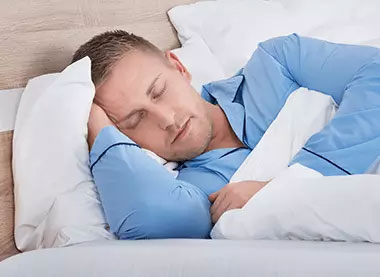The Quiet Toll of Sleep Apnea: Why Your Sleep Isn’t Restful
It often starts quietly. A spouse may hear loud snoring, or the patient wakes with a dry mouth and persistent fatigue. Over time, sleep stops being restorative and leaves the body more tired than refreshed.
Sleep apnea, one of the most common yet least recognized sleep disorders, causes short but repeated breathing interruptions during the night. Many patients do not recall waking, though their bodies rouse repeatedly to regain airflow. Beyond sleep, consequences include heart strain, insulin resistance, and cognitive fatigue.
Subtle Signs, Serious Patterns
Symptoms may seem minor—snoring, headaches, irritability—but the physiological impact is significant:
- Pauses in breathing trigger brain arousal, breaking sleep cycles
- Blood pressure spikes and heart rhythm shifts
- Oxygen levels dip repeatedly
Risk factors include narrow jaws, enlarged tongue base, excess weight, chronic nasal congestion, age, gender, and family history. Dentists can play a key role in early detection through signs like grinding, enamel wear, and gum irritation.
Rethinking Treatment Beyond the Machine
Traditional treatment relies on CPAP machines, which deliver continuous airflow. While highly effective, CPAP can be uncomfortable, leading to inconsistent use.
For these patients, oral appliance therapy offers a practical alternative:
- Custom-fitted devices gently reposition the lower jaw to maintain an open airway
- Non-invasive, portable, and quiet
- Does not force air, simply supports anatomy to prevent collapse
A Precision Tool, Not a One-Size Solution
Success depends on customization:
- Devices are tailored to dental anatomy, bite, and airway behavior
- Materials vary: rigid polymers, soft liners, titanium hinges
- Adjustment or titration is done over time for optimal comfort and effectiveness
- Some devices include micro-adjusters or compliance chips for monitoring usage
Why Many Patients Prefer This Approach
Oral appliances often result in better adherence than CPAP due to comfort and simplicity. Benefits include:
- Gentle, effective relief for mild to moderate OSA
- Compact, quiet, and travel-friendly
- Allows natural sleep positions without disturbing bed partners
- Restores autonomy and comfort in care
Proper patient selection is essential. Severe apnea, advanced TMJ issues, or missing teeth may limit candidacy.
Keeping Progress on Track
Follow-up is critical:
- Regular check-ins prevent minor dental changes or appliance fatigue
- Periodic sleep studies confirm ongoing control
- Adjustments may be needed over time, but most appliances last several years
The goal is not only to improve sleep metrics but to restore restorative sleep and overall health.
A Final Reflection
Sleep apnea often hides in plain sight, disguised as stress or fatigue. With the right tools and guidance, patients can regain restful sleep and better health. Sometimes a small adjustment makes a big difference.
For more information or to schedule a consultation, call 385 233 9823. Gentle Dental Arts provides personalized care for patients seeking thoughtful solutions to sleep apnea.











